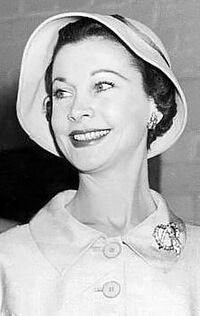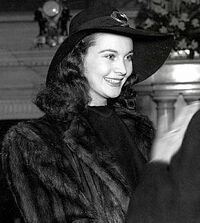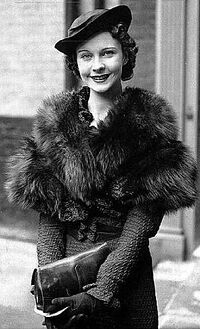Marguerite Tailler: Difference between revisions
mNo edit summary |
mNo edit summary |
||
| Line 87: | Line 87: | ||
Marguerite's personal beliefs were at odds with her work. In her own words, she was a "milquetoast [[Socialism in Gylias#Social democracy|social democrat]]" and a "mild {{wpl|social conservatism|social conservative}}". In private, she admitted that much of her work was intended to "tame" the forces of the [[Golden Revolution]] and "professionalise" them. [[Isabel Longstowe]] observed that Marguerite "took the thankless role of the adult in the room — reminding impatient radicals to slow down, that {{wpl|Rome wasn't built in a day}}, and there are no shortcuts to utopia." | Marguerite's personal beliefs were at odds with her work. In her own words, she was a "milquetoast [[Socialism in Gylias#Social democracy|social democrat]]" and a "mild {{wpl|social conservatism|social conservative}}". In private, she admitted that much of her work was intended to "tame" the forces of the [[Golden Revolution]] and "professionalise" them. [[Isabel Longstowe]] observed that Marguerite "took the thankless role of the adult in the room — reminding impatient radicals to slow down, that {{wpl|Rome wasn't built in a day}}, and there are no shortcuts to utopia." | ||
Her "professionalising" instincts manifested strongly in her emphasis on sartorial presentation. She regularly held forth on the importance of [[Clothing in Gylias|formal clothing]] to colleagues, cabinet members, legislators, and activists, advising: "When people look at you, they must see who they want to be, not who they are." In this area, she found a strong ally in rationing minister [[Neelie op het Mensink]], who | Her "professionalising" instincts manifested strongly in her emphasis on sartorial presentation. She regularly held forth on the importance of [[Clothing in Gylias|formal clothing]] to colleagues, cabinet members, legislators, and activists, advising: "When people look at you, they must see who they want to be, not who they are." In this area, she found a strong ally in rationing minister [[Neelie op het Mensink]] and {{wpl|press secretary}} [[Penelope Morris]], who were similarly forceful in their advocacy. | ||
Marguerite was pleased with the presence of elegant ministers like [[Aliska Géza]], [[Rin Tōsaka]] and [[Sakura Tōsaka]], [[Erika Ďileş]], [[Julie Legrand]], and [[Birgit Eckstein]], but found herself unable to convince [[Darnan Cyras]] that "destroying the old society doesn't mean you have to look like you crawled out of the trashcan". | Marguerite was pleased with the presence of elegant ministers like [[Aliska Géza]], [[Rin Tōsaka]] and [[Sakura Tōsaka]], [[Erika Ďileş]], [[Julie Legrand]], and [[Birgit Eckstein]], but found herself unable to convince [[Darnan Cyras]] that "destroying the old society doesn't mean you have to look like you crawled out of the trashcan". | ||
Revision as of 06:19, 5 July 2022
Marguerite Tailler | |
|---|---|
 Marguerite Tailler in 1968 | |
| Born | 5 November 1926 |
| Died | 9 September 1980 (aged 53) |
| Nationality | |
| Occupation | |
| Known for | Editor of The New World Founder of the Revolutionary Communications Office |
Marguerite Tailler (Gylic transcription: Margerit Taiér; 5 November 1926 – 9 September 1980) was a Venetian–Gylian public relations executive, political consultant, and newspaper editor. As one of the ferroses, she had an influential behind-the-scenes role in the Golden Revolution, mainly known for editing the Democratic Communist Party's newspaper The New World and founding the Revolutionary Communications Office.
Famed for her champagne socialist image, she took a lead role in social engineering efforts and coordinating allied social movements. She believed staunchly in maintaining a popular front strategy and adopting subtle persuasion techniques, rejecting the authoritarian propaganda model. Her leadership at the RevCom contributed significantly to the growth of a "red–black intelligentsia", and held significant sway over Gylian public opinion at its height.
Early life
She was born on 5 November 1926 in the Venetian Principality. She came from a wealthy family; her parents owned a successful advertising company.
She attended local schools with exclusive reputations. She was an average student and graduated in the middle of her class. She attended university, completing a degree in literature, but was similarly middling. She later recalled:
"I went to university mainly as an excuse to go to cafés a lot, see films, and spend time in the company of artists…I barely knew what I was supposed to be reading in the library."
Venetian career
She began working at her parents' company after graduation, initially as a copywriter. She proved to be skilled and rose up the corporate ranks, although skeptical employees always accused her of benefiting from nepotism. She ultimately became the main director of advertising at the company.
Marguerite had a "high-minded" philosophy and stressed the importance of creativity in advertising. She disliked loud, patronising adverts, and believed that soft sell techniques were ideal, as they treated the customer as intelligent.
As her career success grew, she became frustrated with the realisation that she was increasingly spending time in managerial matters rather than advertising. The growth of the company also brought in new employees and managers less committed to her vision.
She developed an interest in politics and grew very interested in the Free Territories. This interest and her sympathies towards leftist radicalism were met with suspicion and disgust by her family.
In 1956, she quit the company, gathered her life savings, and moved to the Free Territories. Upon arrival, she contacted the Freeman sisters and offered her services to the Democratic Communist Party. She was hired for its newspaper, and by the end of the Liberation War had become a key member of Darnan Cyras' inner circle.
Golden Revolution
Following the war, Marguerite ascended to a major behind-the-scenes figure in the Golden Revolution, and a crucial ally of the Darnan Cyras government.
She took a lead role in social engineering efforts and coordinating allied social movements. She believed that "ideology functioned best when hidden" for the purposes of social revolution, and drew on her advertising experience to devise highly successful public relations campaigns.
The New World
Having become the editor of the DCP's newspaper, she renamed it to The New World and redesigned it, making it more graphically sophisticated and addressing a broader audience than just party members. Among her hires was cartoonist Genďe Éyrek, and the newspaper hosted the debut of the Kleptechne franchise.
Marguerite's innovations helped The New World become the most widely read party publication in Gylias.
Revolutionary Communications Office

Marguerite's other famous achievement, and the one she took most pride in, was the creation of the Revolutionary Communications Office (RevCom). Established in 1959, it sought to foster a "red–black intelligentsia". For this purpose, it hired young women, provided them with education and media training, encouraged them to pursue areas of interest, and employed them as campaigners, spokespersons, and public intellectuals.
The resulting "army of well-educated and well-dressed young women" played a high-profile role in the Golden Revolution, and were nicknamed "Marguerite's mademoiselles". Another nickname was "model citizens", playing on their elegant wardrobes and positioning as representatives of the new society.
The RevCom enjoyed significant influence during the Golden Revolution. Its coordination and messaging played a significant behind-the-scenes role, and the public was fascinated by the organisation's culture and its success in recruiting good-looking, articulate, and sophisticated spokeswomen and public intellectuals.
Media and organisation
Marguerite turned Gylias' highly fragmented media landscape into a strong advantage. She helped construct an attractive and cohesive narrative of the Golden Revolution and Groovy Gylias, which took a life of its own.
Penelope Morris described in Nation Building Marguerite's efforts to "industrialise" the process of disseminating revolutionary messages. The New World served as both a platform for public debate and an initial site of publication. Once a message had been tested and refined, it could then be reinforced by the work of the RevCom, and from there it could be spread by other allied organisations, ensuring media coverage. Even if that coverage was unfavourable, the propagation of the message in itself represented a victory.
She also wrote letters to the editor herself and regularly met with journalists, with whom she was an accommodating and charming hostess. Her good relationship with journalists ensured sympathetic coverage of the Golden Revolution even from outlets that were more skeptical of its aims. Reporters appreciated her willingness to be quoted and identified as a source, and to provide additional details and clarification when contacted regarding a story.
She believed staunchly in maintaining a popular front strategy and adopting subtle persuasion techniques, rejecting the authoritarian propaganda model. She set up links with advocacy groups and created several front organisations, superficially devoted to benign causes but helping enlist moderates in defending the Golden Revolution. She once remarked, "These people believe they are actually doing this themselves. This belief must be preserved at any price."
Politics
Marguerite largely kept herself removed from electoral politics. She attended cabinet meetings as an unofficial director of communications, but made no input on policy, only on how to best present it to the public.
She preferred that the DCP not obtain a majority and instead govern in a large coalition, as she felt that this advantaged the social movements and independent activism that drove the Golden Revolution, by not tying it too closely to the Darnan Cyras government.
She was recognised as having a significant role in supervising the Progressive Alliance's campaigns in 1962 and 1969.
Public image

Marguerite gained a public reputation as "Gylias' most brazen champagne socialist". She was fastidious about her appearance and "absolutely unapologetic in her embrace of the high life", in the words of Nancy Freeman. She lived in a large apartment, traveled in a limousine for which she employed a chauffeur, and maintained a large collection of clothes and jewelry. Her extravagant lifestyle would be influential on gauchic, aristerokratia, and the image of the georgettes, and the workplace culture of the RevCom.
Marie-Hélène Arnaud described her as "a high society doyenne with an urbane temperament, who could make herself at home anywhere", and noted that she "seemed to delight in deliberately acting like an aristocrat while in service of the revolution".
Marguerite's personal beliefs were at odds with her work. In her own words, she was a "milquetoast social democrat" and a "mild social conservative". In private, she admitted that much of her work was intended to "tame" the forces of the Golden Revolution and "professionalise" them. Isabel Longstowe observed that Marguerite "took the thankless role of the adult in the room — reminding impatient radicals to slow down, that Rome wasn't built in a day, and there are no shortcuts to utopia."
Her "professionalising" instincts manifested strongly in her emphasis on sartorial presentation. She regularly held forth on the importance of formal clothing to colleagues, cabinet members, legislators, and activists, advising: "When people look at you, they must see who they want to be, not who they are." In this area, she found a strong ally in rationing minister Neelie op het Mensink and press secretary Penelope Morris, who were similarly forceful in their advocacy.
Marguerite was pleased with the presence of elegant ministers like Aliska Géza, Rin Tōsaka and Sakura Tōsaka, Erika Ďileş, Julie Legrand, and Birgit Eckstein, but found herself unable to convince Darnan Cyras that "destroying the old society doesn't mean you have to look like you crawled out of the trashcan".
Befitting her origin, she was a staunch Francophile who strongly supported the francité movement and loudly advocated for close relations between Gylias and the Venetian Principality in cabinet meetings.
Strategy
Marguerite firmly believed in maintaining a popular front strategy at all costs, even if it meant compromises that frustarted revolutionaries. She conceived of the government's role as broadly establishing an "ideal direction" in which independent organisations and social movements could take the lead, reflecting her idea that the Golden Revolution was "something that can't be stopped, only shaped".
Her staunchly practical approach and willingness to draw on her advertising experience rankled the far-left, who considered it immoral "to sell socialism as one would sell soap". Other criticisms came from the conservative opposition, who attacked the RevCom as state-sponsored propaganda and cronyism, while Maria Elena Durante and the Revolutionary Rally would make the RevCom a target for their populist demagoguery.
As a result of her personal beliefs, Marguerite concerned herself very much with the evolution of Gylian conservatism. She supported the progressive conservatives in their ultimately victorious struggle with the reactionaries, and was heartened by the emergence of the National Bloc as the main centre-right force in Gylian politics. She felt that this represented the greatest triumph of the Golden Revolution, in that it produced a centre-right opposition that accepted it as fact and did not wish to challenge or undo it.
Later life and death
The 1976 federal election was a bitter blow for Marguerite, particularly for resulting in a Revolutionary Rally–Progressive Alliance coalition. Marguerite despised RR leader Aén Ďanez, who reciprocated the sentiment, seeing her as an emblem of what she hated about the PA. Aén's government abolished the RevCom in 1977, while the Democratic Communist Party's internal backlash to the coalition led to Marguerite being voted out as editor of The New World.
Now out of power and deprived of her main means of influence, Marguerite's health took a turn for the worse. She struggled with depression and an outburst of tuberculosis that plagued her final years.
She died of tuberculosis on 9 September 1980 in her Mişeyáke flat.
Private life
Marguerite was married until her death, with one daughter. Her daughter recalled that Marguerite was "definitely the undisputed leader of the family", and that her sartorial beliefs extended to the family home. Her husband, who was somewhat uncomfortable with formal clothing, had his wardrobe dictated by her.
She was mainly a practitioner of traditional Gaulish polytheism.

